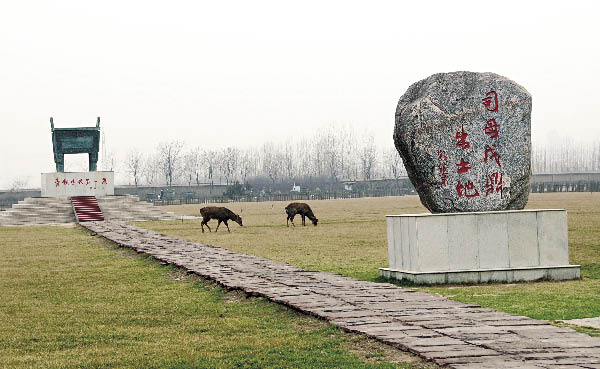|
The vessel was named Hou Mu Wu because the three Chinese characters were found on its inner body. Hou was the title reserved for chieftain, for both male and female. Mu means "mother," and Wu is the name of the woman honored. Specialists presumed that this vessel was cast by a king of the late Shang Dynasty to commemorate his deceased mother.
 |
| The Yin Ruins in Anyang, Henan Province.(Source: China Foto Press) |
In 1959 the China National Museum secured it. In 2005, to prepare for the application for the World Cultural Heritage status for the Yin Ruins, the National Museum moved the Hou Mu Wu Rectangular Ding to the Anyang Yin Ruins Museum where for the first time it was returned to the site where it was unearthed in 1946, and exhibited for nearly four months. According to local media, community members clambered to lay eyes on it.
Now, on the site of the Yin Ruins sits a replica of the Hou Mu Wu Rectangular Ding, made by Zhao Qianmin, a member of the Chinese Society for the Protection of Cultural Relics and the Committee of Restoration of Cultural Relics. This showcase imitation is 3 meters high, 2.5 meters long and 1.74 meters wide, and weighs three tons. On its base are Chinese character inlays meaning "Number One Ding of the Bronze Age."
|
